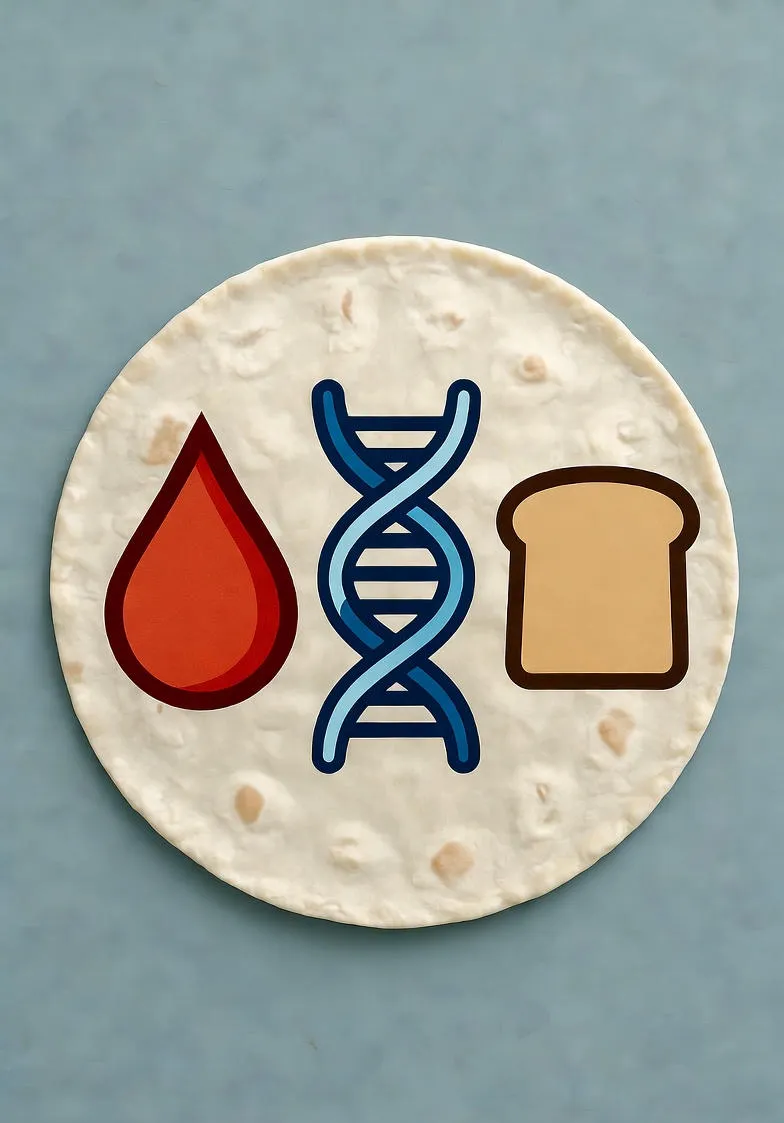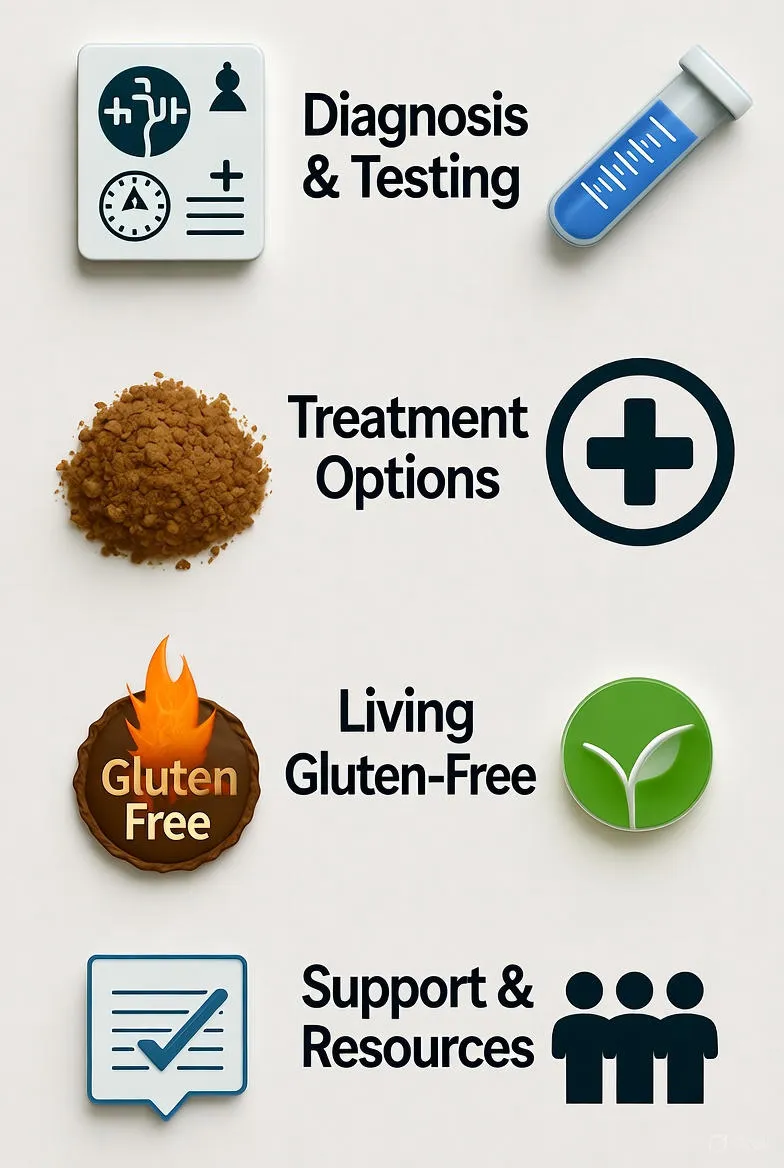Unlocking Accurate Gluten Sensitivity Testing Methods: Your Guide to Reliable Diagnosis
Explore proven and emerging methods for accurate gluten sensitivity testing. From blood tests and biopsies to innovative IL-2 assays, learn how to diagnose celiac disease, NCGS, and wheat allergy effectively in 2025.

Understanding Gluten Sensitivity and Its Impact
Gluten sensitivity affects millions worldwide, manifesting in a range of uncomfortable symptoms that can disrupt daily life. But what exactly is gluten sensitivity? At its core, it refers to an adverse reaction to gluten, a protein found in wheat, barley, and rye. However, the term encompasses several distinct conditions: celiac disease, non-celiac gluten sensitivity (NCGS), and wheat allergy. Each requires different diagnostic approaches, and accuracy in testing is paramount to ensure proper management and avoid unnecessary dietary restrictions.
Celiac disease is an autoimmune disorder where gluten triggers an immune response that damages the small intestine. NCGS, on the other hand, involves symptoms similar to celiac but without the autoimmune damage or specific antibodies. Wheat allergy is an IgE-mediated allergic reaction that can cause immediate symptoms like hives or anaphylaxis. Distinguishing between these is crucial, as misdiagnosis can lead to either overlooked serious conditions or undue stress from unfounded fears.
In recent years, advancements in medical science have refined testing methods, making diagnoses more precise. This guide delves into the most accurate testing strategies, drawing from established protocols and emerging innovations as of 2025. Whether you're experiencing bloating, fatigue, or joint pain after consuming gluten-containing foods, understanding these methods empowers you to seek informed care.
Established Testing Methods for Celiac Disease
Celiac disease diagnosis follows a structured pathway recommended by organizations like the Celiac Disease Foundation and Mayo Clinic. The gold standard remains a combination of serological blood tests and intestinal biopsy, ensuring high sensitivity and specificity.
Serological Blood Tests: The First Line of Defense
Blood tests detect specific antibodies produced in response to gluten. The most reliable is the tissue transglutaminase IgA (tTG-IgA) test, boasting over 95% sensitivity and nearly 100% specificity. This test measures IgA antibodies against tissue transglutaminase, an enzyme involved in the autoimmune response.
Another key test is the endomysial antibody (EMA) test, which targets antibodies against endomysium, the connective tissue surrounding muscle fibers. With a sensitivity of 85-98% and specificity approaching 99%, it's particularly useful for confirming positive tTG results. For individuals with IgA deficiency—affecting about 2-3% of the population—the deamidated gliadin peptide (DGP) IgG test serves as an alternative, maintaining accuracy around 90%.
These tests require you to be consuming gluten—typically equivalent to two slices of bread daily for six weeks—to provoke an immune response. False negatives can occur if you're already on a gluten-free diet, underscoring the importance of timing.
Endoscopic Biopsy: Confirming the Diagnosis
While blood tests are screening tools, an upper endoscopy with duodenal biopsy provides definitive evidence. During this procedure, small tissue samples from the small intestine are examined for villous atrophy, the hallmark of celiac damage. Histological analysis reveals flattened villi, increased intraepithelial lymphocytes, and crypt hyperplasia.
The biopsy's accuracy is exceptional, with sensitivity over 90% when combined with serology. However, it's invasive, requiring sedation and carrying minor risks like bleeding. Pathologists use the Marsh classification to grade damage, from Marsh 1 (minimal changes) to Marsh 3 (total villous atrophy), guiding treatment intensity.
Video capsule endoscopy (VCE) offers a less invasive alternative, swallowing a pill-sized camera that images the small bowel. With 89% sensitivity and 95% specificity, it's gaining traction for detecting subtle lesions missed by traditional endoscopy.
Diagnosing Non-Celiac Gluten Sensitivity: The Challenge of Exclusion
Unlike celiac disease, NCGS lacks a singular biomarker, making diagnosis trickier. It's identified by ruling out celiac and wheat allergy, then observing symptom resolution on a gluten-free diet followed by controlled reintroduction.
Exclusionary Testing Protocol
Begin with celiac serology: negative tTG-IgA, EMA, and total IgA levels exclude autoimmune celiac. Next, wheat allergy tests—skin prick or serum IgE—rule out immediate hypersensitivity. If both are negative and symptoms persist with gluten exposure, NCGS is probable.
Symptom tracking is vital. Tools like the Gastrointestinal Symptom Rating Scale (GSRS) quantify bloating, pain, and diarrhea. A double-blind, placebo-controlled gluten challenge, administered under medical supervision, confirms causality. Patients consume capsules with or without gluten over weeks, logging symptoms blindly.
- Pros: Non-invasive initial steps; empowers patient involvement.
- Cons: Time-consuming (up to three months); subjective elements.
Potential Biomarkers on the Horizon
Research into innate immunity markers shows promise. Elevated fecal calprotectin or intestinal fatty acid-binding protein (I-FABP) may indicate gut inflammation without villous damage. Anti-gliadin IgG antibodies, once dismissed, correlate with NCGS in some studies, though specificity hovers at 70-80%.
Cytokine profiling, measuring interleukin-15 or tumor necrosis factor-alpha, reveals low-grade inflammation unique to NCGS. These aren't standard yet but could revolutionize accuracy in the coming years.
Identifying Wheat Allergy: Rapid and Targeted Tests
Wheat allergy demands swift diagnosis due to its potential severity. Skin prick testing introduces diluted wheat extract to the skin, eliciting a wheal if IgE-mediated. Sensitivity reaches 90%, with results in 15 minutes.
Serum-specific IgE tests quantify antibodies to wheat proteins like omega-5 gliadin. Levels above 0.35 kU/L suggest allergy, with oral food challenges confirming in ambiguous cases. These methods excel in accuracy for immediate reactions but miss delayed ones.
At-Home Testing Kits: Convenience vs. Reliability
The rise of direct-to-consumer kits appeals to those wary of clinical visits. Brands like Everlywell or 23andMe offer finger-prick blood tests for tTG and DGP antibodies, with results in days. Accuracy mirrors lab tests (85-95%) when gluten is consumed, but interpretation requires professional guidance.
Genetic tests for HLA-DQ2/DQ8 genes indicate celiac predisposition (present in 99% of cases) but can't diagnose alone—30% of the general population carries these without disease. For NCGS, at-home symptom journals paired with elimination diets provide practical insights.
Caution: Kits aren't substitutes for biopsies in suspected celiac; false reassurance risks delayed treatment.
Accuracy Considerations and Common Pitfalls
No test is infallible. Serological false positives (5-10%) arise from other autoimmune conditions like thyroiditis. Biopsies can sample error if lesions are patchy. For NCGS, placebo effects confound challenges.
To maximize accuracy:
- Consult a gastroenterologist early.
- Maintain gluten intake pre-testing.
- Combine methods for triangulation.
- Follow up with monitoring post-diagnosis.
Dietary compliance post-diagnosis is equally critical, with repeat serology tracking healing.
Emerging Innovations: The Future of Gluten Testing
2025 brings exciting developments. The IL-2 blood test, detecting gluten-specific T-cell responses via whole blood assay for interleukin-2, achieves 90% sensitivity and 97% specificity—without gluten challenges. Ideal for those already gluten-free, it could eliminate invasive biopsies.
Smartphone-linked lateral flow assays detect gluten in food under three minutes, aiding accidental exposure risk assessment. AI-driven symptom apps analyze patterns against vast datasets, predicting NCGS with 80% accuracy.
Multiplex assays profiling multiple biomarkers simultaneously promise holistic diagnostics, reducing exclusionary steps. As research progresses, expect non-invasive, rapid tests becoming standard by decade's end.
Navigating Diagnosis: Practical Steps Forward
If symptoms suggest gluten issues—chronic diarrhea, weight loss, anemia—start with your primary care provider for serology. Referrals to specialists follow positives. For NCGS suspects, a registered dietitian crafts elimination protocols.
Support groups like Beyond Celiac offer resources, while apps track exposures. Remember, accurate testing isn't just about labels; it's about reclaiming vitality through tailored interventions.
In summary, while celiac testing is robust, NCGS relies on astute exclusion. Stay informed on innovations like IL-2, and prioritize evidence-based paths. Your journey to clarity begins with the right test at the right time.


